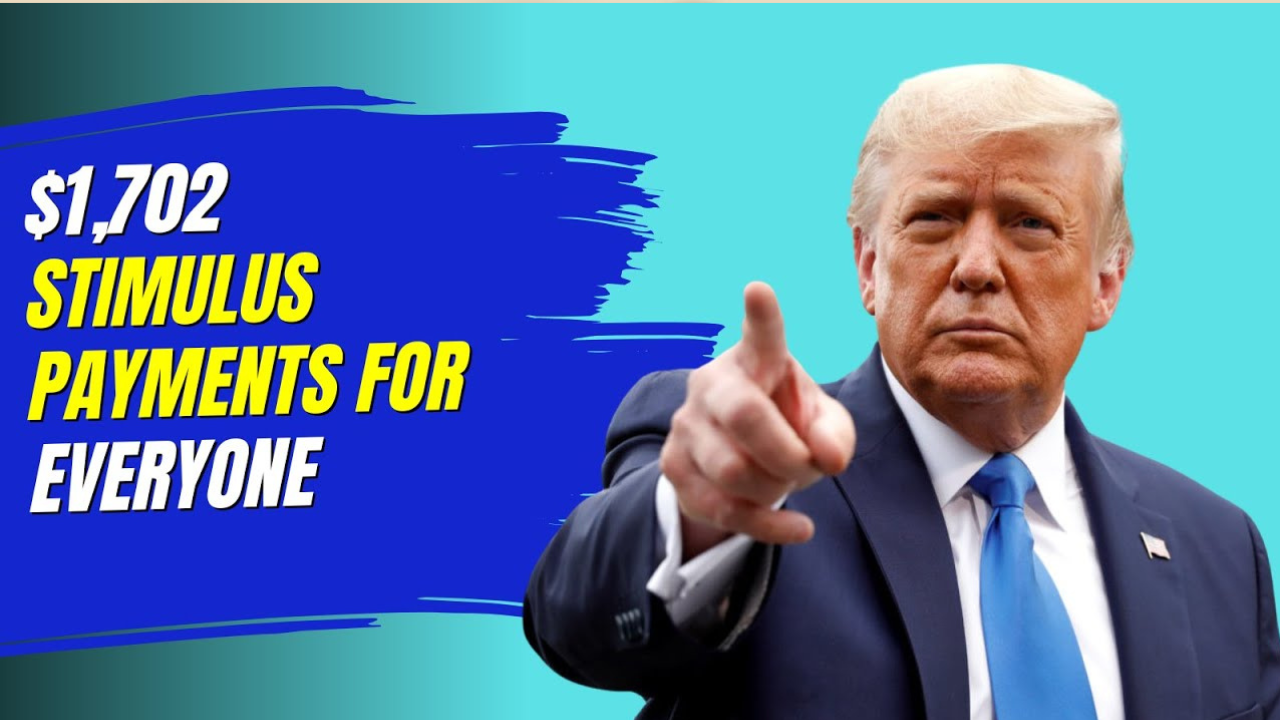$1,702 Stimulus Payment:A medida que el costo de vida sigue subiendo y la inflación afecta los presupuestos familiares, el gobierno de EE. UU. vuelve a intervenir con un alivio financiero muy necesario. Este octubre, los estadounidenses elegibles recibirán un pago de estímulo de $1,702, como parte de un esfuerzo más amplio para ayudar a familias, trabajadores y personas mayores que enfrentan los desafíos económicos actuales.
Si se pregunta cuándo llegará el pago, cuánto recibirá y si es elegible, no está solo. Aquí encontrará todo lo que necesita saber sobre el pago de estímulo de $1,702 para octubre de 2025, incluyendo el calendario completo de pagos, los criterios de elegibilidad y cómo consultar su estado.
Why the $1,702 Stimulus Payment?
The $1,702 stimulus is part of a renewed federal initiative aimed at easing the financial pressure on middle- and low-income Americans. After months of advocacy, public demand, and ongoing economic strain, the federal government has finally approved this one-time payment to help citizens cover essential expenses such as housing, groceries, healthcare, and utilities.
Unlike previous stimulus programs that focused solely on pandemic recovery, this round is meant to address broader economic concerns like inflation, job instability, and cost-of-living increases in areas like rent, gas, and food.
Who Is Eligible for the $1,702 Payment?
The good news? This payment is designed to be more inclusive than past programs. Here’s a breakdown of who qualifies:
Income Requirements
-
Single filers earning $80,000 or less annually are eligible for the full amount.
-
Married couples filing jointly must earn $160,000 or less to qualify for the full payment.
-
Heads of household can qualify with an income of up to $120,000.
Partial payments may still be issued to those slightly above these thresholds, but the benefit gradually phases out beyond these limits.
Citizenship & Residency
-
You must be a U.S. citizen, legal resident, or permanent resident.
-
Individuals with valid Social Security numbers (SSNs) or Taxpayer Identification Numbers (TINs) will be considered.
Tax Filings
-
You must have filed your 2023 tax return by the extended IRS deadline (October 15, 2024).
-
Individuals who receive Social Security, SSI, or VA benefits and do not typically file taxes are still eligible, and their payments will be processed automatically.
Dependent Status
-
If you were claimed as a dependent on someone else’s tax return, you are not eligible for your own payment.
-
However, qualifying parents or guardians may receive additional amounts for each dependent.
Full Payment Schedule: October 2025
The government is issuing the payments in phases throughout the month of October to avoid system overload and ensure smooth processing. Here’s the official schedule:
October 7, 2025 – Direct Deposit Wave 1
-
Payments begin for individuals who filed taxes early and opted for direct deposit.
-
Includes most working individuals and families with verified bank accounts on file.
October 14, 2025 – Direct Deposit Wave 2
-
Payments for Social Security (SSA/SSI) and VA beneficiaries.
-
Includes individuals who do not typically file taxes but are enrolled in federal benefit programs.
October 18, 2025 – Paper Checks Begin Mailing
-
For people who opted out of direct deposit or didn’t provide banking info.
-
Delivery time will vary based on USPS processing, but most checks should arrive by the end of October.
October 21, 2025 – Debit Cards Issued (EIP Cards)
-
Some individuals will receive prepaid debit cards instead of paper checks.
-
Especially common for recipients without bank accounts.
October 28, 2025 – Final Catch-Up Payments
-
Final batch of payments for those who filed late, had information corrected, or were initially missed due to processing errors.
How to Check Your Payment Status
The IRS “Get My Payment” portal will go live on October 3, 2025. You’ll be able to:
-
Confirm your eligibility
-
See when your payment is scheduled
-
Track delivery status (direct deposit, check, or debit card)
To avoid delays, make sure your mailing address and bank information are up to date with the IRS.
What to Do If You Don’t Receive Your Payment
If your payment doesn’t arrive by mid-November, don’t panic. The IRS will allow individuals to file a Payment Trace starting November 15, 2025, to investigate missing or delayed payments.
Also, be on the lookout for scams — the IRS will not call, email, or text you asking for personal information to “release” your stimulus money.
Final Thoughts: Relief at a Time of Great Need
This $1,702 stimulus payment may not fix everything, but it’s a lifeline for many. Whether it’s for rent, groceries, medical bills, or simply keeping the power at home, this payment comes at a time when many Americans are struggling to make ends meet.
If you’re eligible, be sure to double-check your information and stay updated on your payment date. And if you’re unsure whether you’re eligible, use the IRS’s tools or speak with a qualified tax professional.
